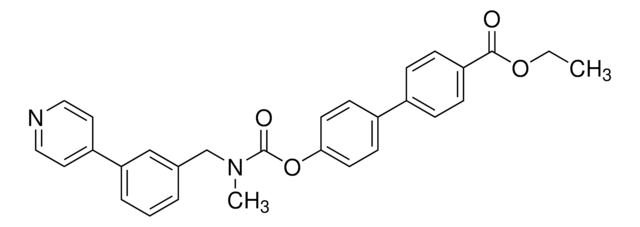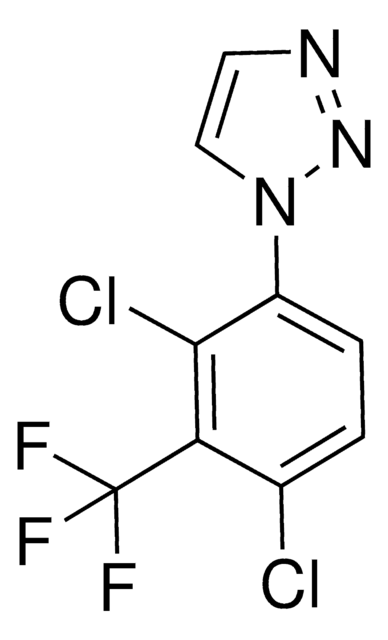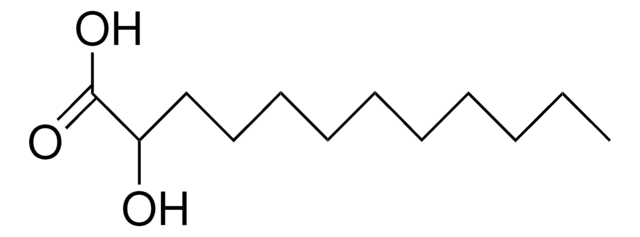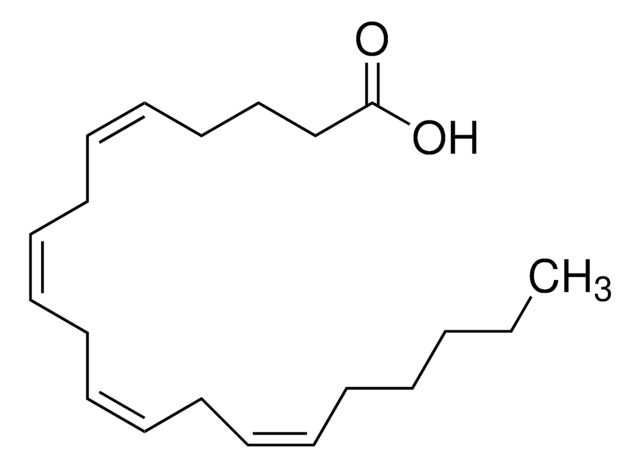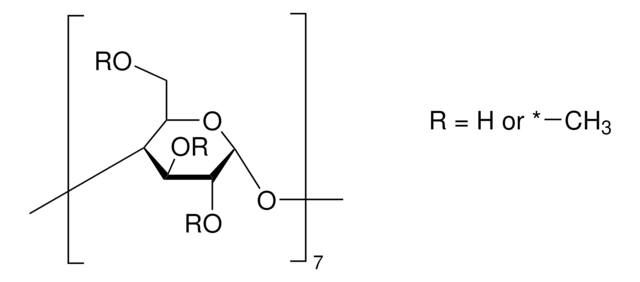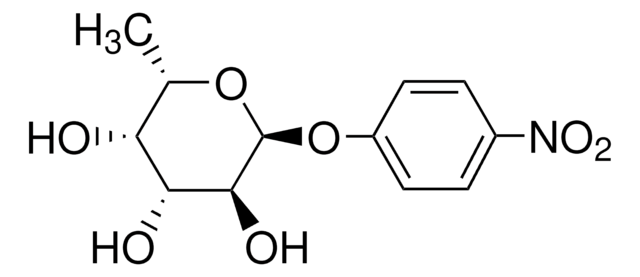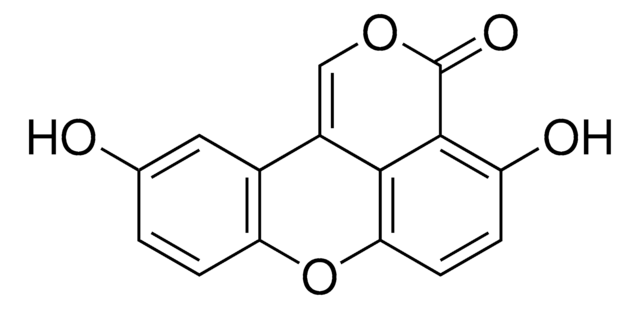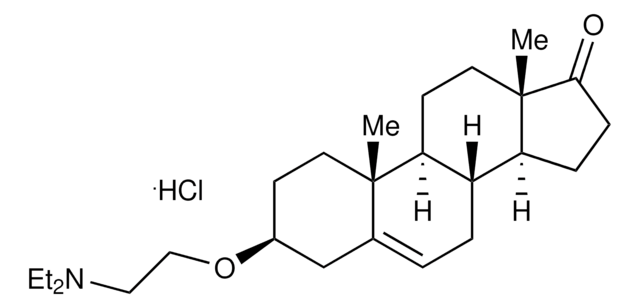推荐产品
质量水平
方案
≥98% (HPLC)
表单
oil
颜色
colorless to light yellow
储存温度
2-8°C
SMILES字符串
O=C(OC1=CC=C([N+]([O-])=O)C=C1)N2C(CCCOC)CCCC2
InChI
1S/C16H22N2O5/c1-22-12-4-6-13-5-2-3-11-17(13)16(19)23-15-9-7-14(8-10-15)18(20)21/h7-10,13H,2-6,11-12H2,1H3
InChI key
XVBRVSAGMWRVCK-UHFFFAOYSA-N
生化/生理作用
WWL229 is a highly selective inhibitor of mouse Carboxylesterase 3 (Ces3) and human CES1 (orthologue of mCes3), serine hydrolases involved in lipolysis in addition to their activities as liver detoxification enzymes. WWL229 inhibits mCes3 with an IC50 of 10 μM, but not Ces1f, ABHD6 or other tested serine hydrolases. In a recent study, hCES1 activity was found to be increased two-fold in obese individuals and patients with type 2 diabetes compared to lean subjects, and is thought to generate surplus fatty acids that can deposit ectopically in tissues. WWL229 inhibits adipocyte basal lipolysis and promotes differentiation and lipid storage in adipocytes.
储存分类代码
11 - Combustible Solids
WGK
WGK 3
闪点(°F)
Not applicable
闪点(°C)
Not applicable
从最新的版本中选择一种:
相关内容
The Cravatt group develops innovative technologies to understand enzyme roles in disease, focusing on activity-based protein profiling.
我们的科学家团队拥有各种研究领域经验,包括生命科学、材料科学、化学合成、色谱、分析及许多其他领域.
联系技术服务部门